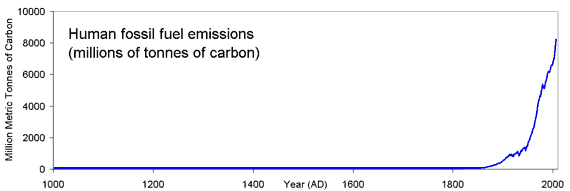We moved into the Bioshelter 10 years ago and role
modeled a different kind of western living.
We learned so much, but we also realize it’s not enough. Curt and I are really taking a hard look at retirement. How do we reshape a system? It’s so much easier to start over. I think we
should become Amish and go live in the woods at the cabin. Curt isn’t so sure, but the system we are in,
our culture, is really becoming more and more DE-generative and the possibility
of something that’s regenerative seems out of the realm of possibility.
If suddenly Big Ag can’t feed us there would be a crisis, so we’d be forced to change. So how soon is that crisis coming? I read 1491, a book about before Columbus arrived. It seems the woods were abundant food forests that the indigenous cultivated. Could we do that? Maybe, but in a crisis situation, it’s better to have the life boat already built. So how do you build the ark, if it hasn’t even started raining?
If suddenly Big Ag can’t feed us there would be a crisis, so we’d be forced to change. So how soon is that crisis coming? I read 1491, a book about before Columbus arrived. It seems the woods were abundant food forests that the indigenous cultivated. Could we do that? Maybe, but in a crisis situation, it’s better to have the life boat already built. So how do you build the ark, if it hasn’t even started raining?
I think our culture is almost at the edge—the crisis is almost
here. It’s so hard to know. We have to take exponential growth seriously.
This video helps explain it. Please
watch it.
These days hockey stick graphs are
everywhere and they seem to be getting worse every year.
CARBON EMISSION GRAPHS
 |
| From: Skeptical Science |
CLIMATE CHANGE GRAPHS
 |
| http://ete.cet.edu/gcc/style/images/uploads/LandOceanTemp.gif |
ENERGY CONSUMPTION GRAPHS
 |
 |
| https://gailtheactuary.files.wordpress.com/2012/03/world-energy-consumption-by-source.png |
And the next hockey stick graph we aren’t really allowed to
talk about: too many people. The UN put this graph together.
So how do we get these graphs to change? How do we use less energy and have a better
life? How do we use less water and have
a better life?
I think oil consumption is my number one concern. If that
bubble bursts we are in big trouble.
Thinking about our big ag system made me do some
research. This came from the University
of Ottowa, so this might be Canadian statistics. It takes 400 gallons of oil to feed one
person for 1 year.
I’m wondering how much it is to feed our Alaskan family? How many gallons of gas do we use to go to Chitna, put the boat in, motor up and down the river dip-netting? How many gallons do we use to pull the boat and a 4-wheeler to the mountains to get a caribou? How many gallons do I use driving to town to get seeds, or to Palmer to get manure? If there’s suddenly no more oil……Curt and I don’t know how to live without it. And we are not very dependent on the Big Ag farms.
- 20% is the farm equipment;
- 16% is the transportation;
- 13% is irrigation;
- 8% is live stock;
- 5% are pesticides.
I’m wondering how much it is to feed our Alaskan family? How many gallons of gas do we use to go to Chitna, put the boat in, motor up and down the river dip-netting? How many gallons do we use to pull the boat and a 4-wheeler to the mountains to get a caribou? How many gallons do I use driving to town to get seeds, or to Palmer to get manure? If there’s suddenly no more oil……Curt and I don’t know how to live without it. And we are not very dependent on the Big Ag farms.
It stresses me out to
know that when the fictitious Beverly Hillbillys struck oil, they paid $0 to
get the oil out. Now we may be using a
barrel of oil to get a barrel out of the ground. Here’s the quote: “If we have energy returned on
energy invested (ERoEI) = 1 then the net energy is zero. We use as much energy
to gather energy as energy gathered.
Here’s the historical numbers
from the Energy Matters blog site is:
“ERoEI for finding oil and gas decreased exponentially from
The EROI for production of the oil and gas industry was
- 1200:1 in 1919
- 5:1 in 2007.
The EROI for production of the oil and gas industry was
- about 20:1 from 1919 to 1972,
- declined to about 8:1 in 1982 when peak drilling occurred,
- recovered to about 17:1 from 1986–2002
- declined sharply to about 11:1 in the mid to late 2000s.”
So where are we now??? How much energy does it take to pull more oil out of the arctic? According to Peak Oil, for things to keep going as we are used to, we must have at least an ERoEi between 5 and 7.
Okay, I’ll stop now. I’m beginning to feel like Chicken
Little. “The sky is falling.” Who wants to come to the cabin with us and live
off the land??? ☺



No comments:
Post a Comment